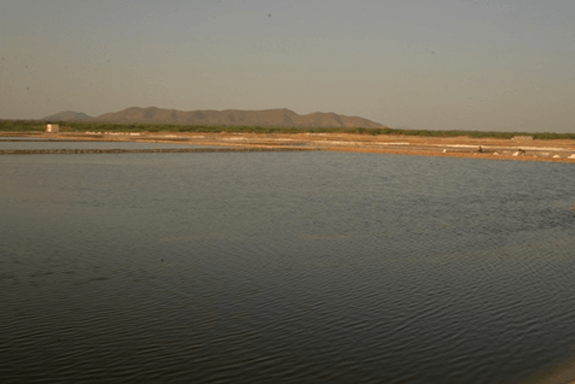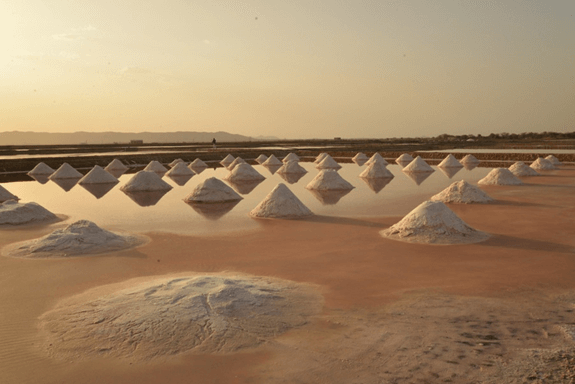Salt, i.e. sodium chloride, is a mineral that naturally occurs in our seas and underground deposits. It is an ionic chemical compound with the formula NaCl. This means that for every gram of salt, almost 40 per cent (39.337%) is sodium (Na) and over 60 per cent (60.663%) is chlorine (Cl). Salt can vary in colour depending upon its level of purity.
There are two main sources of salt. It is harvested directly either from sea water or natural brine, or from rock salt deposits formed by the evaporation of earlier seas that left a layer of rock salt, otherwise known as halite.

Pumping of Brine
- Brine is pumped out from bore wells.
- Saline water is extracted from on site bore wells to various condensation pans.
Condensation
- Brine is moved through various condensers for a natural evaporation and to achieve the required density (ie 18 – 20 gms of salt in 100 ml of water).
- Water is circulated in the condensation pans for 3-4 days for solar evaporation .


Crystallization
- Brine is left in the crystallizing tanks for the natural formation of salt crystals.
- Water is transferred to crystallization tanks from condensation pans.
- Salt crystals form over a period of 7-10 days in summer & 25-30 days in winter.
Extraction
- Salt is extracted from the crystallizers and then dispatched to the various sites for further processing.
- Salt is extracted from the crystallization tanks by skilled workers and then further processed in plants .

